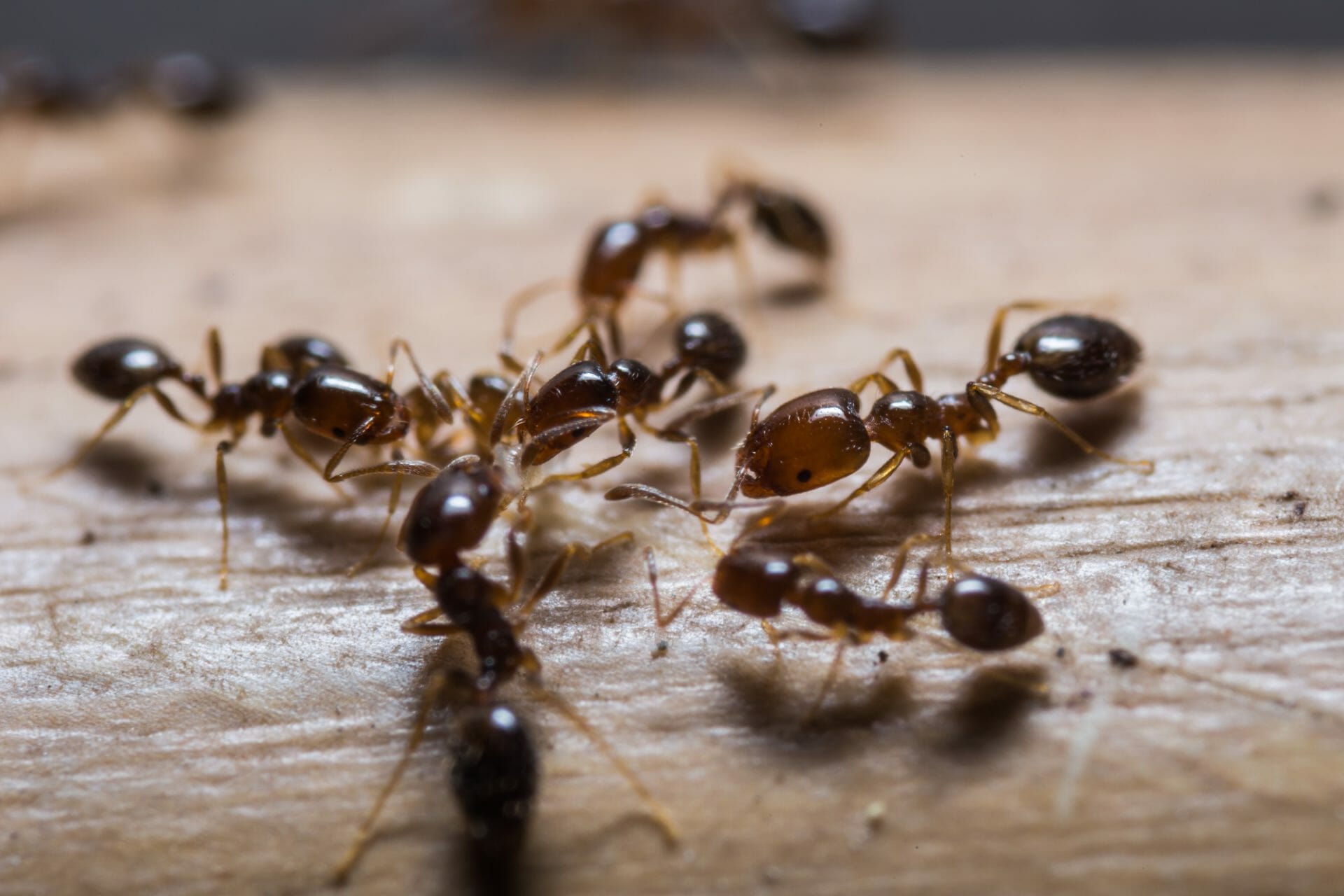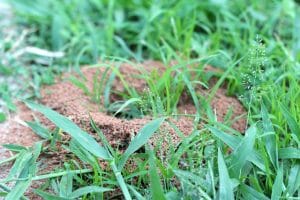
Stop The Fire From Spreading
At Higher Ground, our lawn care program is specially designed to not only add the healthiest and most biodiverse nutrients to your turf but also to actively prevent threats from taking out that same turf. This is one reason why we primarily use organic products because chemicals in and of themselves can be a risk. This risk aversion is precisely why we are so proactive with preventative treatments for disease, pests, and weeds. Each of these predators can tear up your turf if given the chance, which we never want to offer up. In this blog, we will narrow our focus to a specific lawn pest – fire ants. These creatures can harm both you and your landscape, and this blog will address everything from symptoms to treatment to help stop the fire from spreading.
What Are Fire Ants?
Besides being red, you might wonder what makes a fire ant so distinct from a normal ant. Firstly, let us start out with the similarities between fire ants and normal ants. They are both arthropods, and both build mounds as their home. However, one key difference between them is that the mounds created by fire ants do not have a central opening like their black ant counterparts. While there are more than 20 different species of fire ants across the country, these can be broken down into native and imported fire ants. They are all invasive and should be pushed out of your landscape.
 Identifying Fire Ants: Symptoms
Identifying Fire Ants: Symptoms
The unfortunate reality of fire ants is that they can present symptoms both in your turf, and in you should they sting. Along with the identifiable stinger, they are generally only found in shades of red. Their bodies are segmented in two, and up to 300,000 of these fire ants can call one mound home. This mound can be up to three feet high, and two feet in diameter, getting pretty large. Signs of an infestation include obvious underground burrowing and ant trails. In terms of sting symptoms, they cause itching and burning sensations in the affected area. If the sting is more serious or the person is more susceptible, it can even cause difficulty breathing, dizziness, and nausea.
Fire Ant Prevention
One of the biggest draws of fire ants is moisture. They love tropical climates, so anything that is adding excess moisture to your landscape like a leaky pipe, too much irrigation, or a pond is sure to draw in fire ants. They also love to come after food, so an unprotected compost pile with food scraps could be another incentive for fire ants. Before any pest treatments, cleanliness is the best prevention. However, your best bet is to have our team at Higher Ground apply fire ant control that kills quickly and also provides residual protection for a full season on your property.

Fire Ant Treatment
If these prevention methods do not work, and you still end up with fire ants in your landscape it is not the end of the world. At Higher Ground, we use fire ant treatments that guarantee a full season of protection while being safe for children and pets. Our methods are routinely authorized for use in school playgrounds and athletic fields. However, if you want to try a natural remedy first, dump a few gallons of boiling water on the nest. There is no guarantee that this will work but it could be worth a shot, even if just temporarily until our team can get out to your property. So let us help you stop the fire from spreading.
Higher Ground Lawn Care and Lighting is ready to take your property to a higher level. Experience why your neighbors and businesses in University Park, TX & surrounding areas trust Higher Ground Lawn Care & Lighting with their properties. Give us a call at (682) 206-3596 or check out our website today.
Ready to get started?


